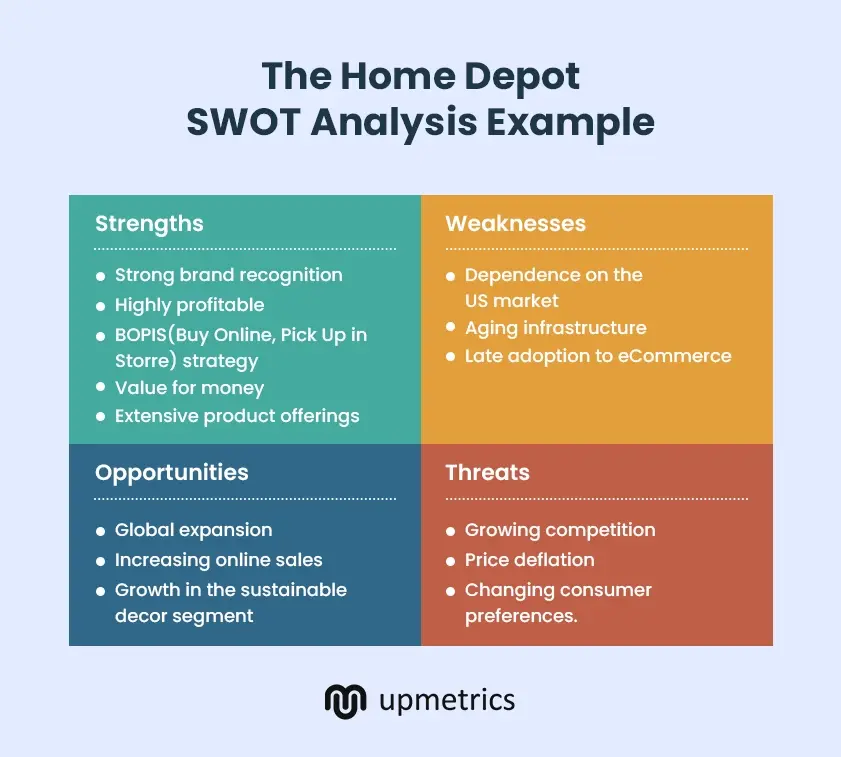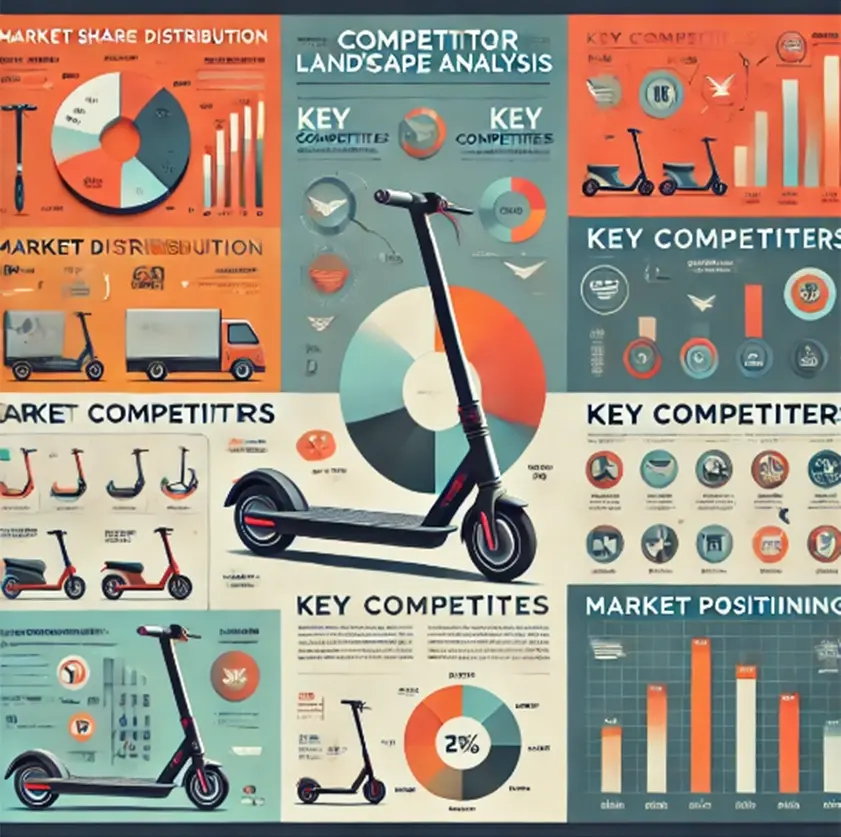You can’t always make the best decisions for your business without understanding how your industry works. You can’t simply enter a shooting competition without understanding how a gun works, right?
That’s why industrial analysis is a really important part of your business plan.
When you nail industrial analysis, you tell investors you’ve done your homework, know your stuff, and are here to last. You also get the opportunity to substantiate any claims of new innovation.
In this article, we will explore what industry analysis is, why it’s important, and how to write it in your business plan.
Let’s begin.
What is industry analysis in a business plan?
Industry analysis is a market assessment methodology that helps businesses and entrepreneurs understand how their company fares against competitors and works within the larger industry it’s a part of.
You can use it to extract essential industry insights like:
- Supply and demand metrics in your industry
- Understand your competitive landscape better
- See industries that are overlapping or affecting your industry
- New opportunities for Innovation and exploration
- And more
Why is industry analysis important for a business plan?
Industry analysis is an important part of a business plan since it gives you a clear vision regarding multiple aspects of the field your company is or wants to occupy.
It will help you get insights like:
- The current size and growth rate of your industry
- Key trends and drivers shaping the industry
- The main players, and their strengths and weaknesses
- The market share distribution among key players
- The customer segments within the industry, and their needs and preferences
- The major challenges and barriers to entering the industry
- The regulatory and legal considerations affecting the industry
- How technology impacts your industry, and emerging innovations
- The typical financial metrics and performance benchmarks for the industry
- The potential risks and uncertainties within the industry, and how they should be mitigated
Comprehensive industry analysis helps you internally strategize your next moves in the business and builds accurate expectations for potential investors.
5 Steps to conduct your own industry analysis
Use the following steps to conduct a thorough industry analysis:
1. Conduct industry background research
Start with researching the background of your industry or a specific subsection of it. Decide what key questions you want your analysis to answer, like competitor behavior, market growth, or industry standards.
Go beyond a simple Google search to look for industry associations by making an additional effort of referencing to things like:
- Reports from firms like Gartner, Forrester, and McKinsey that provide in-depth analyses and forecasts
- Nielsen, Statista, and IBISWorld that offer comprehensive market data and industry statistics
- Data from government sources such as the U.S. Census Bureau, Bureau of Economic Analysis (BEA), and Eurostat
- Data from trade associations like the National Retail Federation (NRF) or American Marketing Association (AMA)
- Business news outlet data from Financial Times, Bloomberg, and The Wall Street Journal for current trends
Make a list of your competitors and explore ways to gather research on them.
2. Collect data
Gather relevant industry data to answer key questions about your target market and competitors. Dive into the latest industry analysis reports, both from your company and others, to spot the latest trends in your business environment.
You should also review competitor ads, promotions, product placements, and financial data to learn about their profits and target consumers. Don’t forget to tap into secondary sources like government stats, marketing reports, and journal articles for additional insights.
Here are some data points to focus on:
- Industry participants: Look at the other players in the industry, both small and big, and see what they’re doing, how they’re innovating or gaining investments.
- Distribution patterns: To effectively manage distribution in your industry, assess whether you need to utilize regional distributors, direct sales, or intermediaries, and adapt your strategy to leverage current technologies and distribution models to optimize reach and efficiency.
- Competition and buying patterns: An industry analysis isn’t complete without a clear mention of how customers decide between competitors when making a purchase decision. What are the factors they look at? What makes certain competitors more successful than others? What’s the sweet pricing spot?
3. Analyze the collected data
Next, use an industry analysis model to examine the data you’ve collected on your particular industry. You can choose from one of the following:
Porter’s 5 Forces or Competitive Forces Model
Porter’s model proposes that if you analyze these five forces, you can get an accurate impression of your industry, making further analysis easier:
1. Intensity of industry rivalry
The number of players in an industry and their market shares reflect its competitiveness. For instance, in the smartphone industry, the lack of product differentiation intensifies competition among brands.
2. Threat of potential entrants
This highlights how easily new firms can enter a market. For instance, entry into the electric vehicle industry is difficult due to factors like high R&D costs and regulatory hurdles. Thus, established companies can enjoy prolonged benefits, facing a consistent set of rivals.
3. Bargaining power of suppliers
When the bargaining power of suppliers is high, your suppliers could set higher prices or reduce the quality of what you buy.
For example, if a semiconductor manufacturing company relies on a limited number of chip suppliers, those suppliers hold significant leverage. This can heavily impact smaller tech companies, as it directly affects both the cost and quality of their products.
4. Bargaining power of buyers
The reverse occurs when customers hold the bargaining power. In the retail industry, if a supermarket chain represents a significant portion of sales for multiple suppliers, it can negotiate lower prices, demand higher quality, or secure additional services and discounts.
5. Threat of substitute goods/services
Industries constantly face competition from others producing substitute products. For example, in the beverage industry, soda companies compete with bottled water and energy drink producers. This rivalry limits their ability to charge high prices.
SWOT Analysis
SWOT stands for Strengths, Weaknesses, Opportunities, and Threats. These parameters are a great way of getting a quick idea about various facets of the industry. You can use this image for reference:

Broad Factor Analysis or PESTEL Analysis
PESTEL stands for political, economic, social, technological, environmental, and legal factors. It’s beneficial when you’re analyzing such external elements that might affect your business.
4. Pen down your analysis
Once you’re done with collecting and analyzing your data, it’s time to pen it down as an industry analysis document.
Remember to highlight the following sections in your draft:
- Introduction: Give an overview of your industry, competitors, and key industry trends.
- Aim: Clearly state the purpose of your analysis and outline the key questions.
- Data: Present the data you gathered with supporting charts and graphs.
- Analysis: Discuss your findings and answer the questions from the aim.
- Future: Highlight the short- and long-term impacts on the company and any potential challenges.
- Summary: Wrap it up with a brief 3-4 line summary
Tip: You should also use the pointers in this article’s next section to present an ideal industrial analysis document. Don’t forget to proofread and edit once you are done.
5. Evaluate your business position
Once you have the document in front of you, thoroughly evaluate your business. Use the analysis section you created to guide the company’s direction in your focus area.
Let’s say you make soft drinks, and you see a notable shift in consumer’s drinking patterns through industry analysis. You see a lot of your competitors are now launching low-sugar alternatives for their global markets, and the consumer demand for healthier beverages is increasing continuously.
You must actively join the bandwagon and present and document all your efforts to launch healthy beverages from your own brand.
If your findings raise more questions, consider running a follow-up analysis to dig deeper into other industry factors.
How to write the industry analysis section of your plan
Here’s a step-by-step approach to writing a meaningful and actionable industry analysis section for your business plan:
Brief overview
This part highlights the key findings of the analysis and quick recommendations. Herein, you can mention the level of your research, whether it’s on a local, regional, provincial, national, and/or global level. You can also briefly highlight the core points that you will be expanding upon in the upcoming sections.
Industry overview
In the industry overview section, include a short description of your industry with the prime products/services and markets. Make sure you document recent developments, news, and innovations.
For instance, if you’re working in the electric vehicle (EV) industry, this section should answer questions like:
- What are the latest technological advancements in battery efficiency?
- How are government policies influencing the adoption of electric vehicles?
- Who are the leading manufacturers, and what market share do they hold?
- What are the current challenges and opportunities in the EV market?
Government regulations
Be sure to mention any recent laws that impact your industry and the licenses or permits you’ll need to operate in your target market. Don’t forget to cover any associated fees or costs that might come into play
Competitor landscape
This section needs to have an analysis of the major players, market dynamics (share and positioning), competitor strategies, future competition, as well as competitive forces and their unique selling proposition.
Your unique position
Describe what sets you apart in the competitive landscape. For instance, if you’re entering the plant-based food industry, you might highlight how your product’s unique blend of ingredients offers superior taste and nutritional value compared to existing options.
Remember to mention the following:
- Industry forecast: Gather economic data and industry forecasts for various time frames, such as 5, 10, and 20 years, and be sure to cite your sources. Also, clarify whether the industry is new and emerging, growing, maturing, or declining.
- Potential risks and limitations: Discuss the factors that could negatively affect your business, along with your short-term and long-term outlook
Spend more time researching, less writing
Make business plans in minutes with AI
Plans starting from $7/month

Tips to write your industry analysis
Two Simple tips you don’t want to miss:
1. Never make it too long
The structure of the industry analysis section of your business plan depends a lot on your intended audiences and the overall plan’s depth. That being said, an ideal industry analysis section usually occupies around 1-2 pages of a 40-50 page business plan.
Any longer would make it hard for a reader to skim through.
2. Use visuals
Include visual aids like charts, graphs, and tables. They help convey relevant information in a streamlined manner. An ideal analysis should have a mix of text and visuals, with visuals accounting for 20-30% of the content.
For instance, you can use infographics like these to give an overview of the competitor landscape.

Business plan industry analysis example
You can’t simply haphazardly present an industry analysis by lugging together all the collected info on a few pages. You need a well-defined structure. So, here’s an example of a simplified industry analysis draft for you to extract inspiration from.
Business Name: Urban Fusion Bistro
Location: Brooklyn, New York
Type of Business: Boutique Coffee Roastery
Overview
Urban Fusion Bistro is a boutique coffee roastery in Brooklyn, New York, aiming to offer a premium coffee experience with artisanal roasting and a modern atmosphere. Our goal is to serve coffee enthusiasts and casual drinkers with high-quality, single-origin coffees and unique blends.
Government Regulations
Operating requires compliance with local health, safety, and business regulations. Key permits include a business license, food service permit, and possibly a retail food permit, with initial costs of around $25,000.
Competitor Landscape
Brooklyn’s coffee market includes chains and independent cafes. While competition exists, the boutique coffee segment is less saturated. Urban Fusion Bistro’s focus on artisanal roasting and premium products offers a competitive edge.
Unique Position
Urban Fusion Bistro will stand out with its artisanal roasting, curated coffee selection, and modern, inviting ambiance. This approach targets both coffee connoisseurs and casual drinkers seeking a unique experience.
Industry Forecast
The coffee industry in Brooklyn is set to grow steadily, with specialty coffee projected to increase by 7% annually over the next decade. Urban Fusion Bistro is positioned to meet the rising demand for high-quality, artisanal coffee.
Potential Risks and Limitations
Risks include economic downturns, increased competition, and fluctuations in coffee prices. Regulatory changes and evolving consumer preferences may also impact operations. Strategic planning and high-quality standards will be crucial for long-term success.
Financial Position
Urban Fusion Bistro expects first-year revenues of $800,000 with a 20% profit margin. Below are the financial projections:
| Year | Revenue | COGS | Operating Expense | EBITDA |
|---|---|---|---|---|
| 1 | $400,000 | $120,000 | $80,000 | $200,000 |
| 2 | $480,000 | $144,000 | $96,000 | $240,000 |
| 3 | $560,000 | $168,000 | $112,000 | $280,000 |
| 4 | $640,000 | $192,000 | $128,000 | $320,000 |
| 5 | $720,000 | $216,000 | $144,000 | $360,000 |
Conclusion
Urban Fusion Bistro is set to thrive in Brooklyn’s growing coffee market with its focus on artisanal roasting and a unique café experience. Our solid financial plan and understanding of market trends position us for success, promising a distinctive coffee experience for Brooklyn’s coffee lovers.
The bottom line
And with that, you’re all set to write your impressive industry analysis section of your comprehensive business plan.
If you’re still a bit hesitant to do all of this on your own or don’t really know where to start, you can always put your trust into a good business plan software like Upmetrics.
Its AI-powered business plan generator will provide you with both step-by-step guidance and AI assistance so you can generate a perfect business plan with the perfect industry analysis section to help you grab the pulse of your industry.


